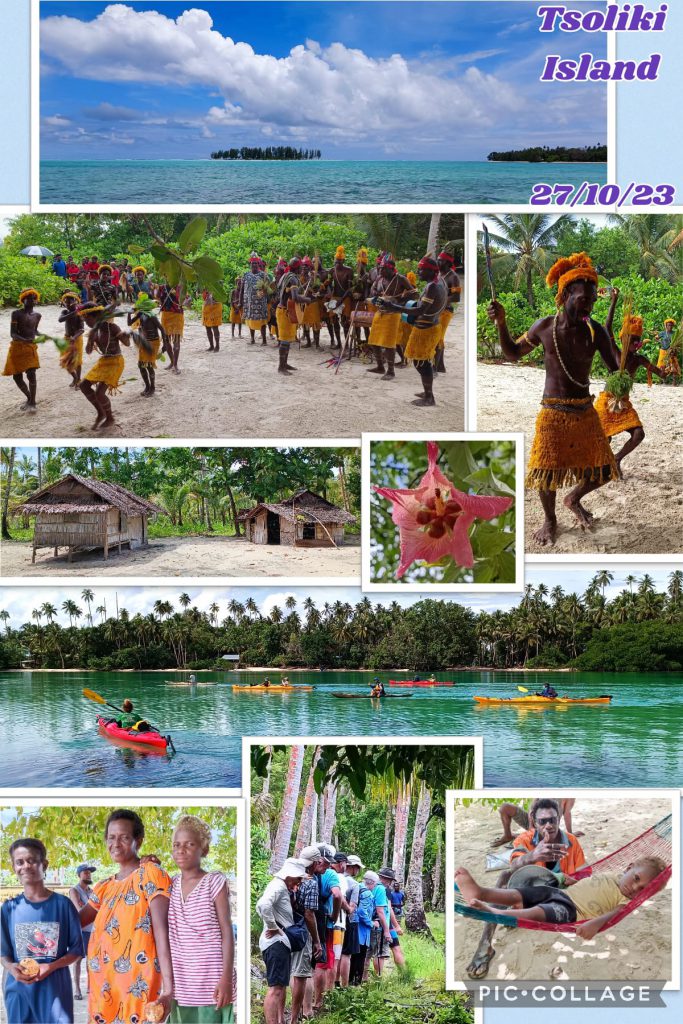Papua New Guinea
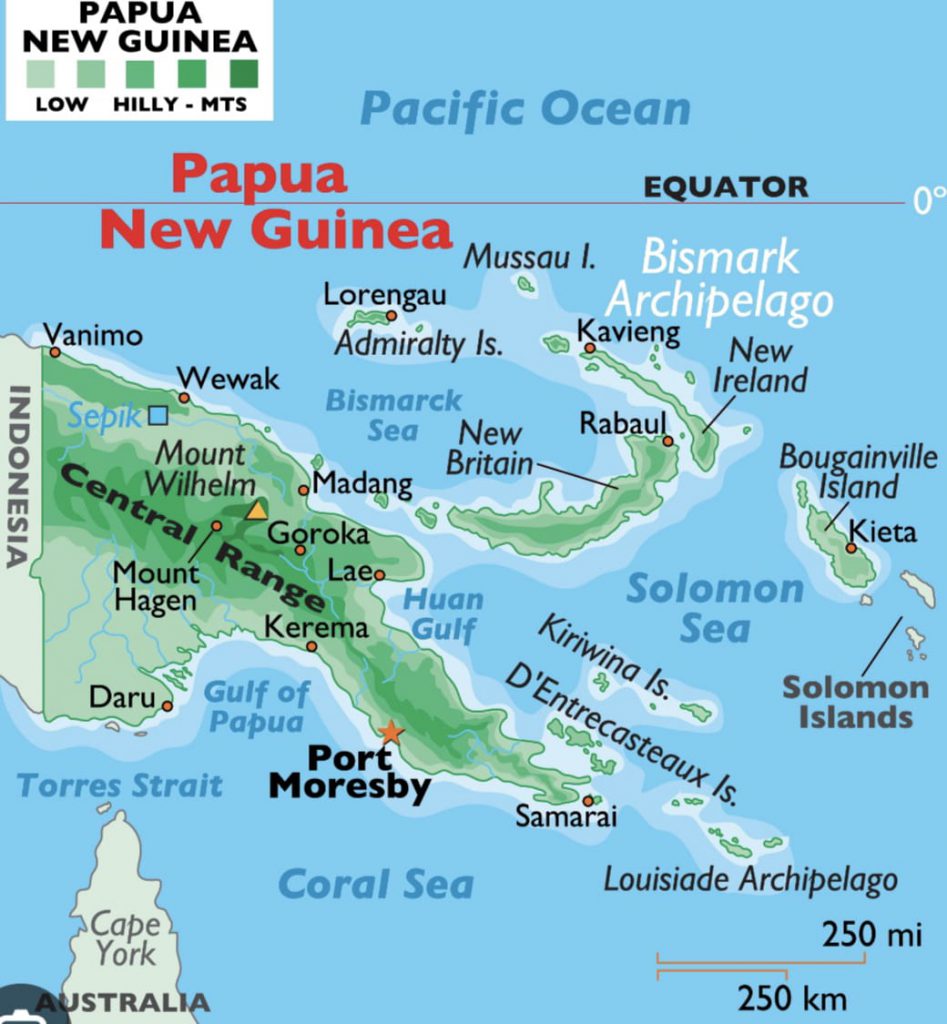
Bordering Indonesia to the west and Australia to the south, PNG is an island country located on the Pacific Ocean. It occupies the east half of New Guinea Island that is in both Australia and Oceania, and some nearby islands. Papau and New Guinea used to be separate entities, influenced and colonized over 250 years by the Sultanate of Tidore,Holland, Germany,Britain and Japan. In 1885 Germany annexed the northern coast ‘New Guinea’ and Britain annexed the southern regions ‘Papau’. During WWI PNG was occupied by the Australian and Australia was given a mandate to administer the former German New Guinea after the war. During the WWII, the Japanese forces landed on the northern coast of New Guinea and occupied the island from 1941 to 1945. The territory achieved its independence from Australia on 16 September 1975 with Michael Somare serving as the first Prime Minister.
Divided into four regions, PNG has 20 province-level divisions including two autonomous regions of Bougainville and the National Capital District of Port Moresby. It is one of the most culturally diverse countries in the world with 832 living languages (2006) and over 1,000 distinct ethnic groups. Most of the country’s population of over 11.78 million, 85% of the people live in rural areas posing significant challenges in health, education and economic opportunities.
October 23 Monday : Sepik River, PNG
In the morning, we had a panel discussion on wild places and their conservation by Tim Flannery, Rod Morris and Lou Sanson (daughter of the first president of PNG) followed by Aaron giving a presentation on Heritage Expeditions – The Story So Far.

We reached the mouth of the Sepik River around lunch time. The 1,126m-long river covering an area of 7.7 million hectares, is one of the world’s great rivers. There is a shallow bar of no more than 5m deep at its entrance. We began with a short zodiac cruise before approaching the village of Kopar. We were greeted by a spectacular thunderstorm with lightnings and had to seek shelter under stilt houses. When the storm was over, we watched a spectacular performance of a Dragon Dance accompanied by chanting and Kundu drumming. It is totally different from the traditional Chinese Dragon Dance. Their dragon looks different too: it has a large bright head surrounded by a vast feathery headdress. We were entertained by the spirited community with a few more dances/acts that drew hearty laughter from the locals. After the performance, most passengers lingered in the local handicraft market. The masks, carved paddles, penis gourds and Bilum bags are all good souvenirs. As I have stopped buying souvenirs a long time ago, I spent my time exploring the village with a church which is neat and tidy.
Before returning to the boat, we had a zodiac cruise up the river. The banks were lined with sago palms from which the locals extract starch as their staple food. We saw a Sea Eagle, Whistling and Black Kite on the riverside branches.
We had a lovely recap of the expedition and watched a wonderful slideshow of the whole journey.
Medang – Port Vila (24 October to 8 November)
October 24 Tuesday : Madang, PNG

Today was the last day of the first leg of the expedition that ended in Medang. I woke up early and watched the ship docking at a dockyard. I said goodbye to Vivian and Nicki, my cabin mates who got off the boat while a dozen passengers stayed on for the following expedition ending in Vanuatu. The boat arranged a tour for the remaining passengers in the morning. The weather was fantastic with clear blue sky. We travelled in a minibus with multi-stops. We first stopped in the Madang Resort Hotel by the port where we saw the spectacular and big Victoria-crowned Pigeon with a large crest of feathers on its head. It is the largest of all pigeons and is found only in the wild in New Guinea and some smaller offshore islands. We enjoyed visiting the Bilbil Village and had a leisure time strolling around and talked with the locals. We also visited the Madang Museum.
Today was also the beginning of the second leg of the expedition. After lunch, I watched new joining passengers boarding the Heritage Adventure. I was glad that I stayed in the same cabin by myself. After the newcomers went through the lifeboat drill, we all joined Captain Tomasz’s welcome cocktails. The ship set sail at 6 pm heading back to the Sepik River.
.October 25 Wednesday: Sepik River and Kopar
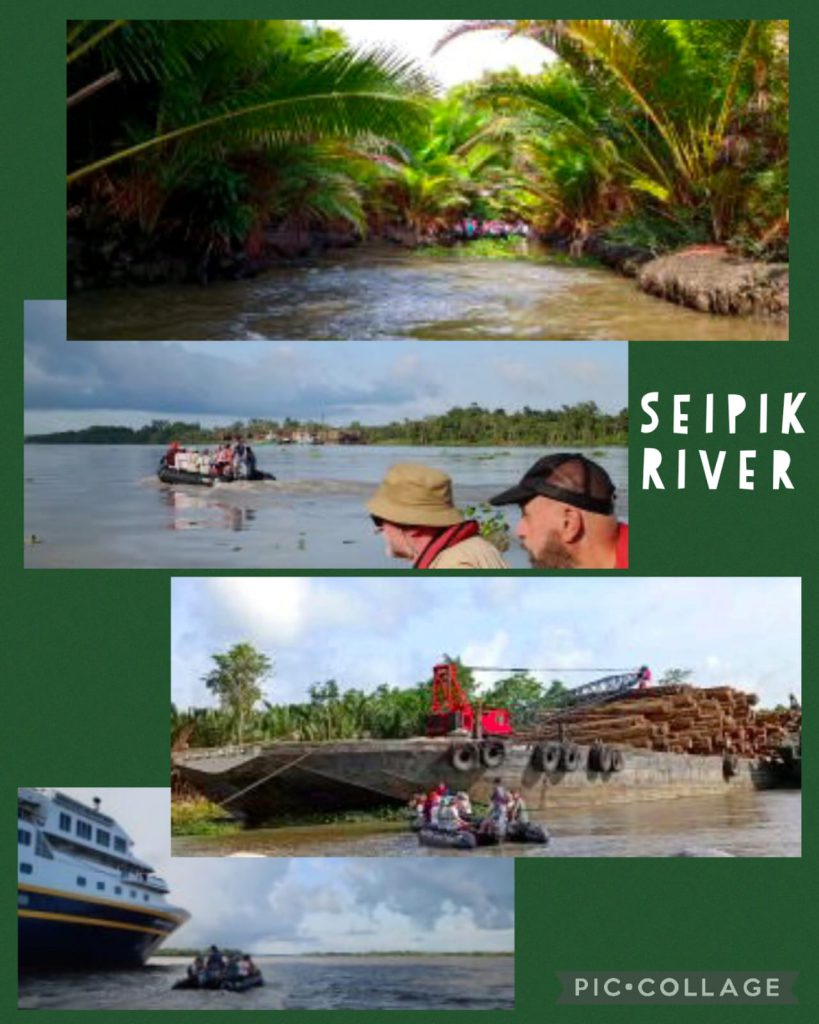
Today, I repeated what I had done only two days ago: the ship headed back to the Sepik River and to visit the village of Kopar, one of best destinations for crafts – wood craving, bark paintings, masks, shields, figures etc. Once again, we watched several rafts of floating debris, logs and water hyacinth being swept towards the sea. The ongoing logging activities are a concern though some of the activities are regulated and legal. I watched the same traditional dance, song and drum with the performers adorned with an assortment of feathered headdresses, pendent necklaces and leg bracelets of shells. The officials gave speeches while school children sang the national anthem after the performances. While others were excited, wandered around the village and shopped, I headed towards the river on my own meeting some locals.
After lunch, we set sail crossing the Bismarch Sea in the afternoon. The Captain set a course to take us through the volcanic Schouten Islands with a great closeup view of the Bam Island. We had Steve talking about travel photography and Frank on birding. Captain Tomasz introduced us to his officers and crew and we toasted the voyage ahead before dinner.
© S. Bradley, Heritage Expeditions
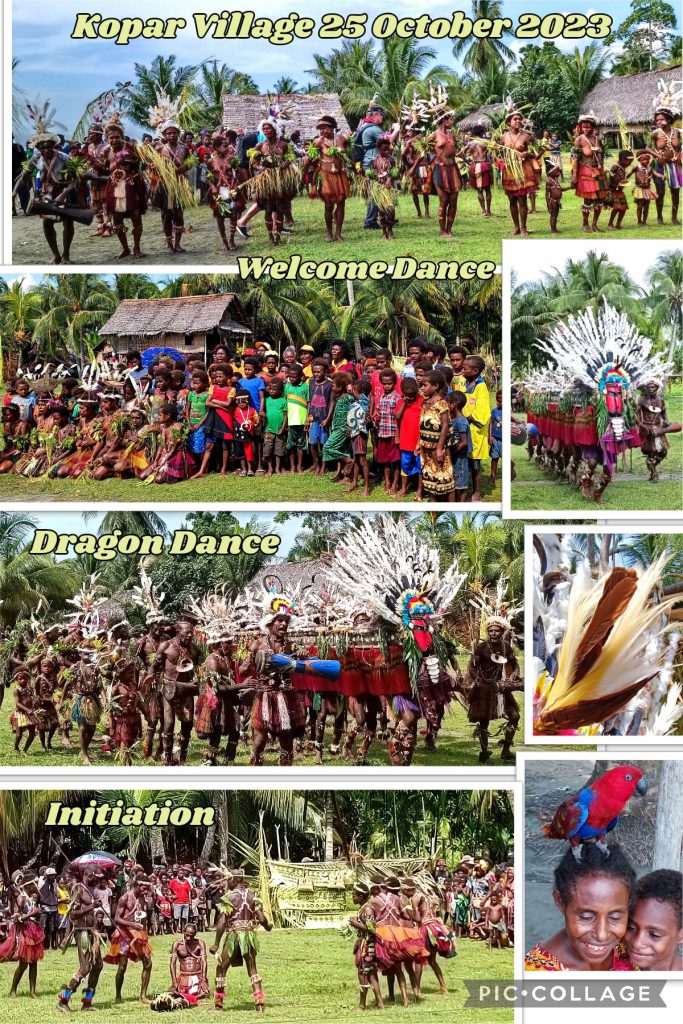

© S. Bradley, Heritage Expeditions
October 26 Thursday – Manus Island
The ship anchored inside the northern barrier reef of Manus Island, the largest island in the Admiralty group. We were greeted by locals from the Derimbat Village (population: about 600) in well-crafted canoes. After breakfast. we went ashore after 7:30am and were welcomed warmly with ‘hey hey’ dance. After an official welcome, the locals showed us their houses and gardens. They demonstrated the art of sago making and treated us with fresh coconut juice.


© S. Bradley, Heritage Expeditions
By 11:30 am, we were back on board for a quick change before heading to the nearby uninhabited island of Hawei for snorkelling which I found to be average (after the great time I had in Raja Ampat Indonesia). In the afternoon, Suzanne gave an interesting talk on the Crocodile Men of the Sepik while Bruce talked about WWII in the Pacific preparing us for our visit to New Hanover Island.
October 27 Friday – Tsoilik, New Hanover

© S. Bradley, Heritage Expeditions
Tsoilik Island laying within the New Ireland archipelago in the New Hanover District, is one of the most remote parts of PNG. I found a Micronesian feel when the locals gave their unique Melanesian welcome with traditional drums and dance. We took a canoe crossing a small lagoon where Rod showed us the Ant Plants. We also had time for drift snorkelling along the outer reef edge. I saw coral bommies, Pipefish, Nudibranchs and Anemone Fish. In the afternoon, we had a lecture from Rod on Birds-of-paradise of PNG. Then we all went on deck to watch the spectacular Steffen Strait between New Hanover and New Island when our ship was sailing through.
October 28 Saturday – Rabaul New Britain
Rabaul was planned and built around the Simpson Harbour during the German New Guinea administration that controlled the area from 1884 to 1919. It became the capital of the Australian-mandated Territory of New Guinea until 1937. The Japanese captured it in 1942, and became its main base of military and naval activities in South Pacific. During WWII some 97000 Japanese troops were stationed on the Gazelle Peninsula . More than 20,000 tonnes of allied bombs were dropped: Rabaul is the second most bombed city after Berlin.
There are five volcanoes, four on the eastern side and Mt Vulcan on the western side of the Blanche Bay, one of the best harbours in the South Pacific.
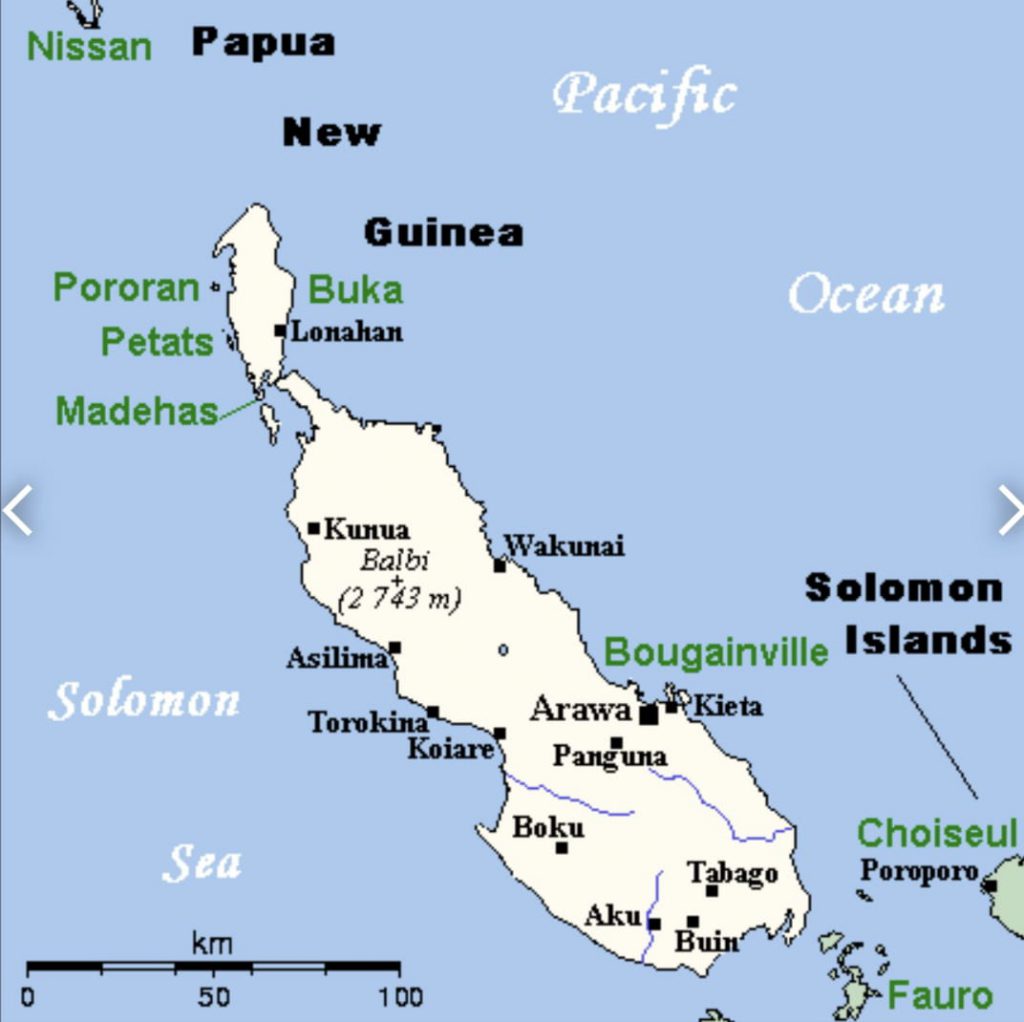
Nestled next to two towering Tavurvur and Volcan Volcanoes which erupted on 19 September 1994, Rabaul was badly damaged with 80% of its buildings destroyed. We landed at Hot Spring Beach with eerie black sand beach and sulphur-streaked boiling springs. We took minibuses and had a great sightseeing day.
On the way to the Vulcanology Observatory located on a hill behind Rabaul, our bus passed through the remains of the pyroclastic flow (ash and pumice) that has destroyed the city. We had a magnificent panoramic view of volcanoes, the bay and Rabaul and could see the extent of the three huge volcanic eruptions in 1880, 1937 and 1994 (one every 57 years!).
The second stop was the nostalgic New Guinea Club established in 1933 which is now Rabaul Museum with artefacts of German colonisation and war history. There are many great images of eruption and destruction of Rabaul buried by ash.
The third stop was at the former bunker of Admiral Yamamoto, one of the architects of Japan’s war in the Pacific and an instrumental part of the Japanese attack on Pearl Harbour. We entered the 200-metre-deep tunnel that still housed the remains of five barges.
We proceeded to Kokopo, the new provincial capital. Our fourth stop was at the Kokopo War Museum with a great collection of primarily Japanese equipment from WWII including significant parts of aircraft, tanks, artillery, naval guns, bombs and vehicles. In one of the buildings, I saw photos and records relating to the German colonisation period. The final stop was the bustling Kokopo Market with lots of commodities including betel nut, mustard stick, lime and tobacco leaves on sale.
After lunch, we had a lovely afternoon at the nearby Pigeon Island with cocktails and snorkeled off the beach.
October 29 Sunday– Nissan Island
We woke up and saw the lush green island of Nissan, the largest one of the Green Islands coral atoll. We had a warm welcome beginning with a traditional cleansing, followed by a walk past lines of smiling and engaging locals. After the usual formal speeches, we were delighted by the ‘sing sings’ and dances performed by contingents from various other villages around the island under the shade of a magnificent Barringtonia tree. These included butterfly, bird snake and waka dances. After the official activities, a few school girls took me on a village tour. Their houses are neat and they grow staple crops of kaukau (sweet potato), coconuts, some cacao and drying seaweed. We also had an adventure tour to look for the remains of a WWII aircraft. This was the best village visit I had on the whole expedition.
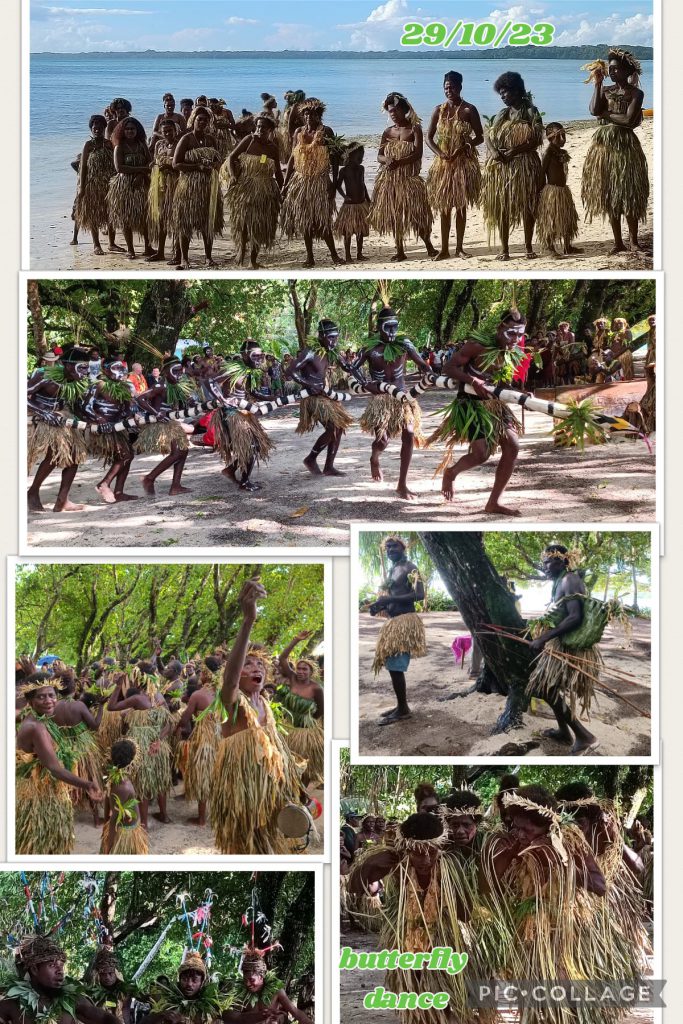
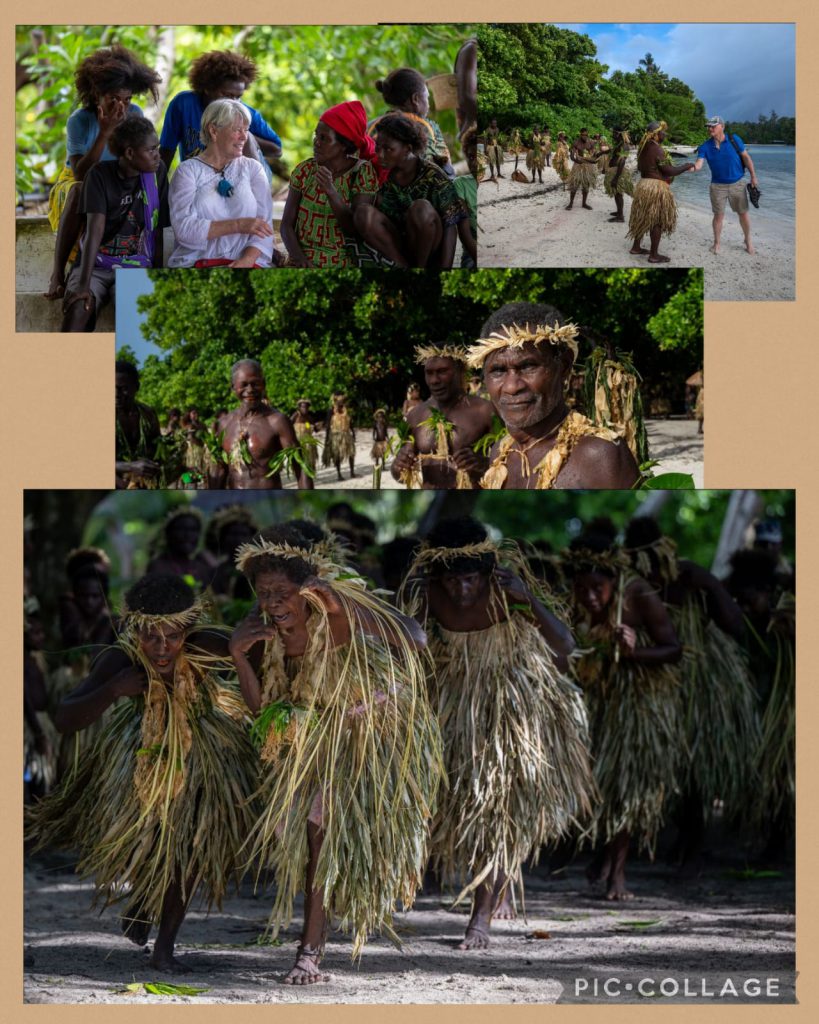
© S. Bradley, Heritage Expeditions
After lunch, I also had the best drift snorkel of the expedition. From the drop-off location, I snorkelled along the reef and saw many brightly coloured corals interspersed with Anemones Fish and Damsels. We set sail at 3pm.
October 30 Monday: Bougainville
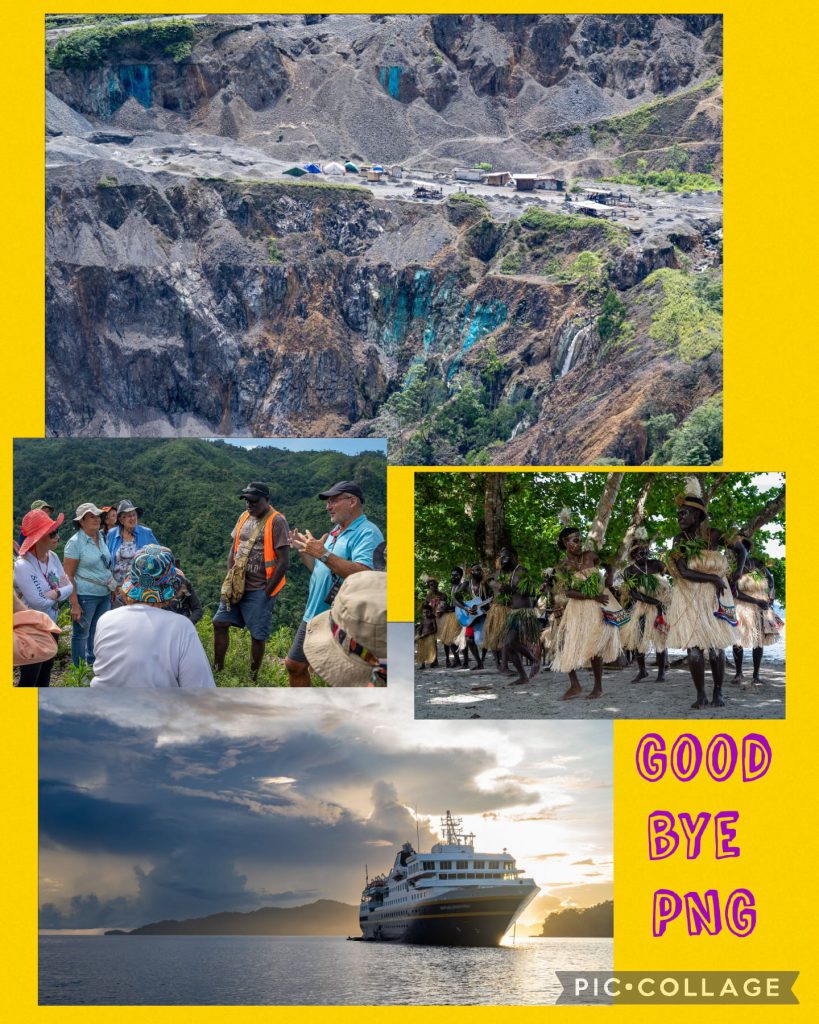
© S. Bradley, Heritage Expeditions
We were anchored off the small port of Arawa and got on several minibuses. The Bougainville Island covered in jungle is 200km long with an area of 9,300km2 and a population of about 300,000. The people of the island culturally associate themselves more with the people of the Solomon Islands than PNG and the island has a sad and turbulent history.
Our convoy passed through the countryside and had a steep climb to the top of a mountain before descending into the notorious Panguna mine site. This copper, silver and gold mine was established in 1963 and controlled by Rio Tinto, but was closed in 1989. Once the world’s largest open-cut copper mine stretching more than 5km long and employing more than 7,000 people, it was a mini city with schools, shops, residential area, sport centres, churches and markets. In 1987, Panguna Landowners Association led by Francis Ona and Pepetua Sereo was formed. Mining polluted the Fly River and the locals demanded a hefty compensation. In 1988, the Bougainville Revolutionary Army was formed bringing closure of mines in 1989; and as many as 20,000 people died during the 10-year civil war (1988-1998). In a referendum in 2019, Bougainville people voted for independence from PNG by 2027. Though this referendum was non-binding on the PNG government, it presents a taxing problem. We stopped at the main pit, standing atop the derelict surreal sad looking massive tailings canal and the crusher plants.
After a quick lunch aboard the ship, we returned ashore to visit the Arawa market. Before returning to the boat, we had an excellent farewell performance by a group of musicians at a local Catholic mission. Most of the musicians playing guitars, kundu drums, pipes and traditional dancers adorned with face-painting, grass skirts and colourful fans were young and energetic. Goodbye PNG!


